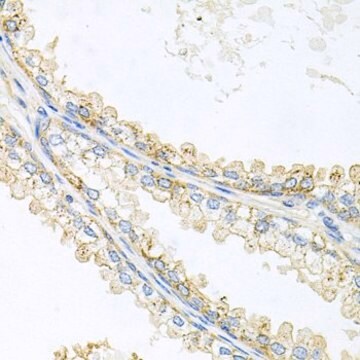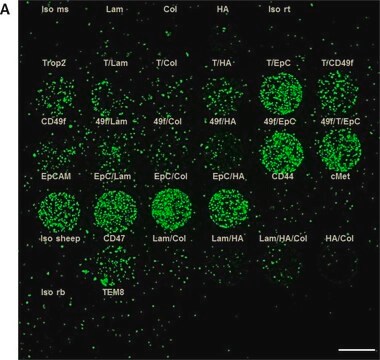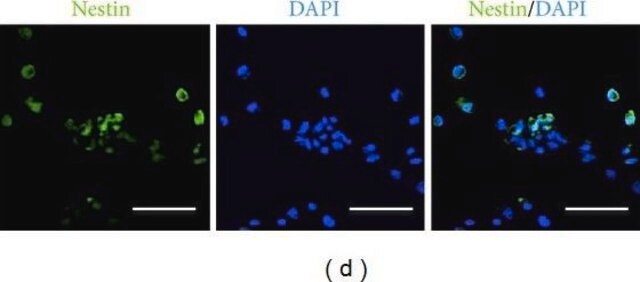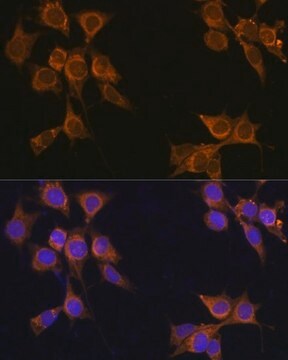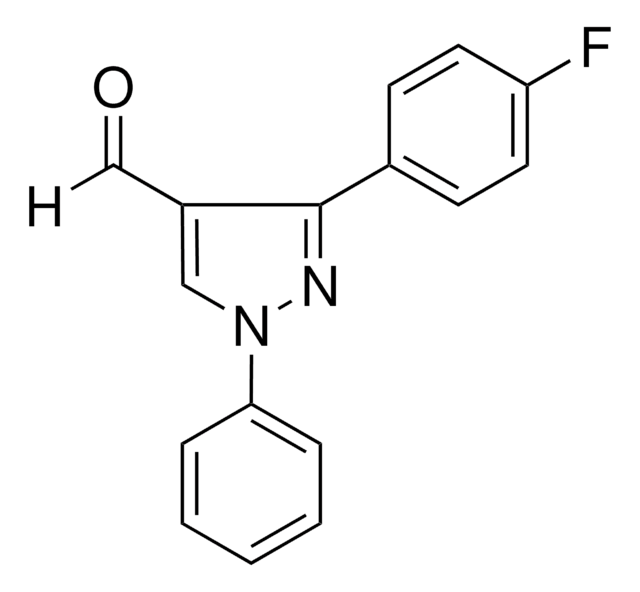MAB4310
Anti-CD133 Antibody, clone 13A4
clone 13A4, Chemicon®, from rat
Synonym(s):
Prominin-1, AC133 (human)
About This Item
Recommended Products
biological source
rat
Quality Level
antibody form
purified immunoglobulin
antibody product type
primary antibodies
clone
13A4, monoclonal
species reactivity
mouse
should not react with
chicken, Drosophila, rat
manufacturer/tradename
Chemicon®
technique(s)
flow cytometry: suitable
immunohistochemistry: suitable
immunoprecipitation (IP): suitable
western blot: suitable
input
sample type hematopoietic stem cell(s)
sample type neural stem cell(s)
sample type epithelial cells
sample type: mouse embryonic stem cell(s)
sample type mesenchymal stem cell(s)
isotype
IgG1κ
suitability
not suitable for immunohistochemistry (Paraffin)
NCBI accession no.
UniProt accession no.
shipped in
wet ice
target post-translational modification
unmodified
Gene Information
dog ... Prom1(488816)
human ... PROM1(8842)
mouse ... Prom1(19126)
rat ... Prom1(60357)
Related Categories
General description
Specificity
This antibody can be used to isolate murine stem cells from brain and bone marrow.
The 13A4 antibody does not cross react with rat, human, chicken, or Drosophila antigen. The original paper is located at: http://www.pnas.org/cgi/reprint/94/23/12425.pdf
Immunogen
Application
Western Blot Analysis: A 1:1000 dilution from a representative lot detected CD133 in monkey kidney lysate.
Stem Cell Research
Neural Stem Cells
Hematopoietic Stem Cells
Target description
Physical form
Storage and Stability
Analysis Note
Positive Control: Kidney tissue or membranes
Negative Control: Liver tissue or membranes
Other Notes
Legal Information
Disclaimer
Not finding the right product?
Try our Product Selector Tool.
Storage Class Code
10 - Combustible liquids
WGK
WGK 2
Flash Point(F)
Not applicable
Flash Point(C)
Not applicable
Certificates of Analysis (COA)
Search for Certificates of Analysis (COA) by entering the products Lot/Batch Number. Lot and Batch Numbers can be found on a product’s label following the words ‘Lot’ or ‘Batch’.
Already Own This Product?
Find documentation for the products that you have recently purchased in the Document Library.
Our team of scientists has experience in all areas of research including Life Science, Material Science, Chemical Synthesis, Chromatography, Analytical and many others.
Contact Technical Service
